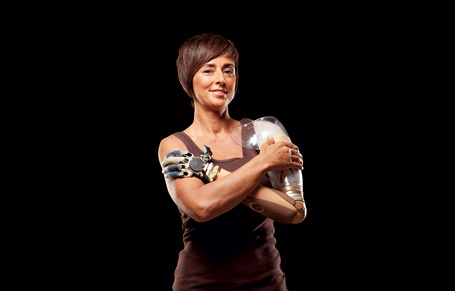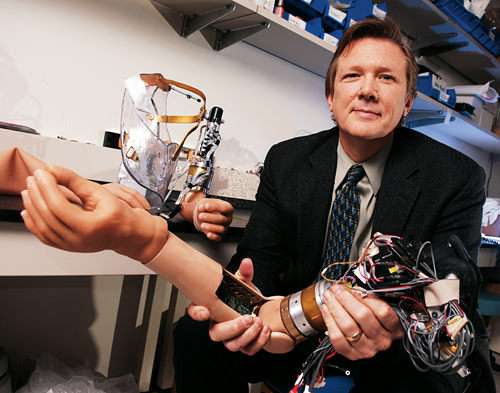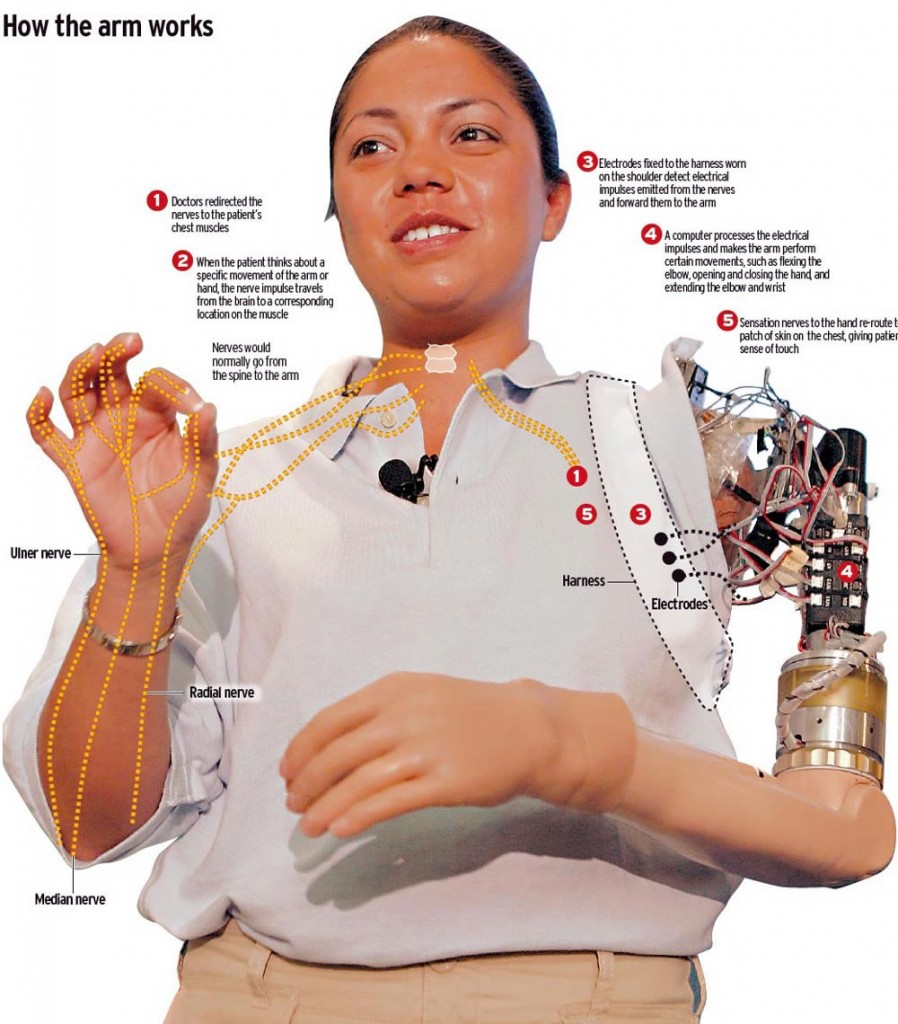Advanced Arm Prosthetic That Can Feel

I’m a very avid fan of the TED TALKS presentations and am always fascinated by them. In fact many times before I go to bed I’ll try and watch a presentation or two using their app on my iPad. If you’re not familiar with TED, it’s a setup where speakers get to share their ideas, inventions, theories, and ways of doing things in quick presentations ranging from approximately 5-20 minutes. Multiple cites around the country and world hold their own TED satellite events with great success. I recently watched a great presentation that was done last year by physiatrist and engineer Todd Kuiken of Northwestern University. He and his team have created and are improving upon an advanced arm prosthetic that meshes with the nervous system and can even sense touch.
Early Stages
In the presentation, Kuiken gives an informative history of upper arm prosthetics and how they work. He explains the early limitations and how he wanted to improve on that. The early prototypes of his prosthetic using reinnervation were modified versions of existing prosthetics. Basically muscles in the chest would move as if they were moving an arm and hand as normal. Sensors would then read these signals and tell the prosthesis what to do. This showed an increased efficiency of use compared to existing prosthetics.

Improvements
Later the prosthetic arm improved and became more human-esque in form, weight, and movement. This arm would be able to have more motions and have better sensors. Amanda Kitts who lost her arm in a car accident demonstrates this version with Kuiken at the TED presentation.
A Look Ahead
Kuiken gives a glimpse into the future of the prosthetic with two examples. The first is an arm prosthetic by DEKA using reinnervation. This prosthetic has even more motions and improved hand dexterity. The other future feature is the sense of touch. Sensors are placed at the tip of the fingertips and the user rubs this across different grits of sandpaper. In a quick clip during the presentation you can see this at work.
Conclusion
Like many other TED presentations this one did not disappoint. The entire presentation gives a great view of how this technology has improved in just a few years. The future does in fact look bright. Watch the presentation below and if you’re interested, a how to surgical video. Also I encourage everyone to watch other TED presentations at www.TED.com.

